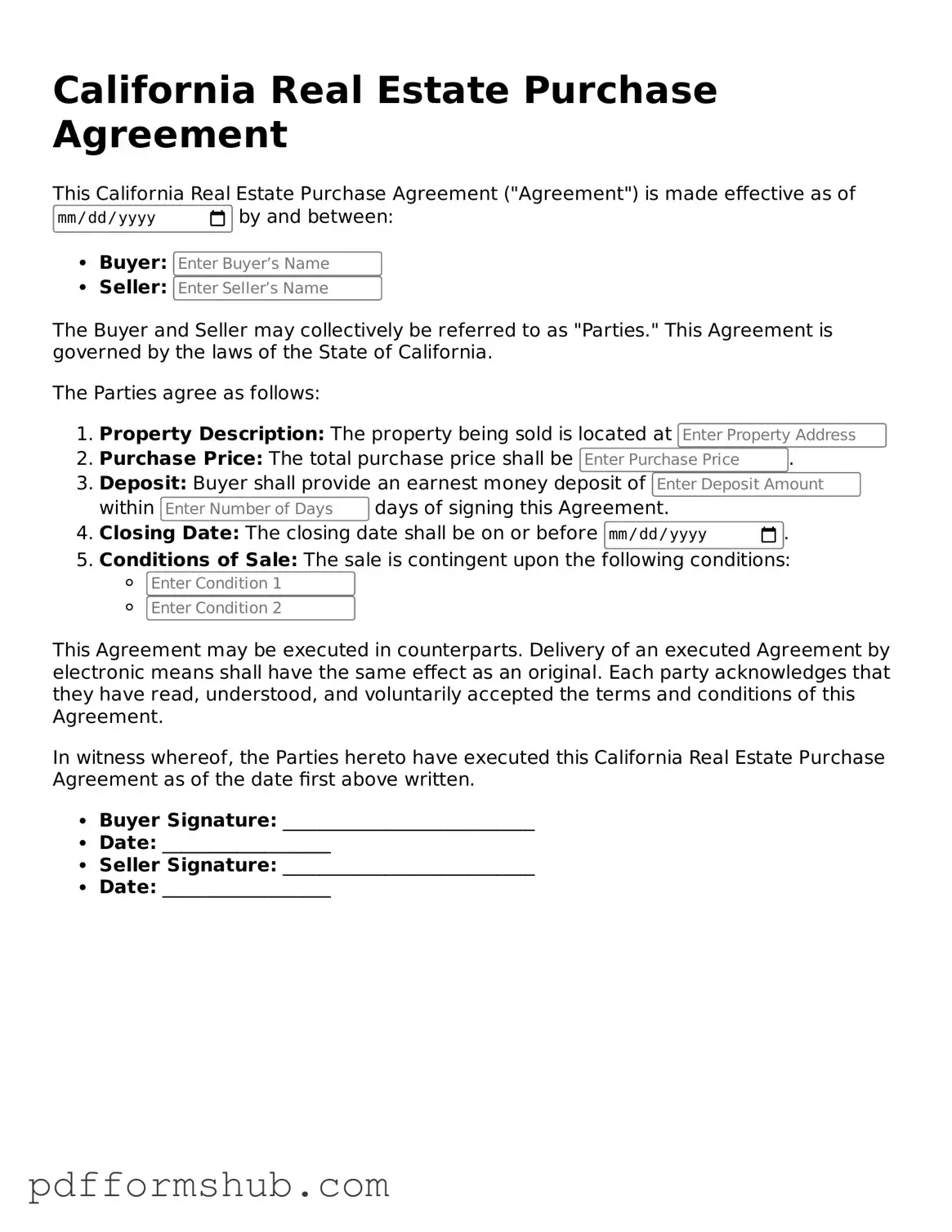Attorney-Verified Real Estate Purchase Agreement Form for California State
The California Real Estate Purchase Agreement form serves as a crucial document in the real estate transaction process, outlining the terms and conditions agreed upon by buyers and sellers. This form ensures that both parties are on the same page regarding the sale, helping to protect their interests and facilitate a smooth transfer of property. For those ready to embark on their real estate journey, fill out the form by clicking the button below.
Customize Form
